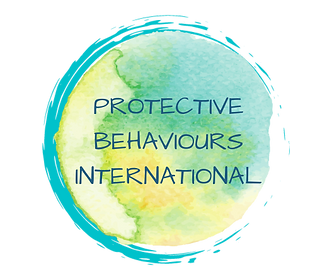When Safety Isn’t Obvious
- Bronwyn Clee
- Sep 10
- 4 min read
Have you ever walked into a room and felt off? Unsure? Uncertain? Uncomfortable? No one has said anything, and nothing obvious is happening, yet something in your body whispers, "This doesn't feel right." That's your body talking, and it's often way ahead of your mind when it comes to detecting safety. It's important to understand, that psychological safety isn't just the absence of harm; it's about feeling safe enough to be yourself, to speak honestly, and trust that you won't be shamed, ignored, or punished for it.
The foundational principle of Universal Protective Behaviours is that we all have the right to feel safe at all times. But sometimes, safety isn't obvious. Your mind might say everything looks fine, but your nervous system is already on alert. This is because our bodies are wired for survival. Your nervous system acts like a 24 7 security guard, constantly scanning for signs of safety or danger. The amygdala, a small almond-shaped part of our brain, sounds the alarm without waiting for a full investigation, which is why you might feel unsettled before you even know why.
Polyvagal theory, in simple terms, says our nervous system moves through different states depending on whether it detects safety or danger. When we're feeling calm and connected, we can think clearly, engage, and feel at ease. But if we're mobilised for action, our fight or flight system takes over. And when we're in shutdown, we feel overwhelmed, our system freezes, or we experience a sense of numbness.

Subtle signals from our body can indicate when safety isn't obvious. You might feel tightness in your jaw or shoulders; your breathing may turn shallow or hold without realising it. Restlessness, fidgetiness, and alertness might kick in, causing your focus to drift or prompting you to scan the room for an exit. These signals are your nervous system's way of saying "pay attention." Ignoring these cues can lead to stress building up until you reach a breaking point, like snapping at someone, withdrawing completely, feeling utterly exhausted, or even experiencing burnout.
If you're not feeling okay, you can take action.
The earlier you notice, the more options you have access to. Think of your body's cues like a faint smoke alarm, and respond before the fire spreads. So, you might wonder, how do we change our response? How do we disrupt that feeling of unease?
Let's introduce some Protective Interruptions with two simple somatic practices to reset your body's safety system:
The first one is called a Butterfly Hug. To perform this, cross your arms so each hand rests on the opposite upper arm, and then gently tap one side and then the other in a steady, comfortable rhythm. This gentle bilateral stimulation helps calm the nervous system and anchors you into the present moment.
The second strategy is the 3-6 grounding breath. To perform this, breathe in through your nose for a slow count of three, then exhale through your mouth for a slow count of six. If possible, gently press your feet into the floor as you exhale. This long exhale signals to your body:
"I am allowed to feel safe, and I am allowed to feel settled."
Consider practicing these two strategies and think about habit stacking them. Habit stacking involves pairing a new habit with an existing one to make it easier to remember. For instance, before you wash your face in the morning, you could perform a butterfly hug and practice the 3-6 grounding breath. Habit stacking aligns a new practice with something you already do daily, making adoption smoother. I use habit stacking on the daily.
In closing, remember that our body is our first line of safety.
It often notices before our brain catches up. Instead of brushing off these cues, treat them like a trusted friend tapping you on the shoulder. Feeling safe isn't just about your surroundings; it's also about how you feel in your own skin.
EPS 1 In Summary: Understanding our body's signals for safety
Entering a room and feeling uncomfortable can be a sign of the body's early detection of unsafe situations before the mind registers them.
Psychological safety goes beyond the absence of harm to include feeling safe enough to be oneself and speak honestly without fear of negative consequences.
The body, particularly the amygdala, constantly scans for safety and danger. It can react to potential threats in milliseconds, often ahead of conscious awareness.
Polyvagal Theory explains that our nervous system shifts between states depending on perceived safety, affecting our ability to think clearly and feel at ease.
Physiological cues like jaw tightness, altered breathing, and restlessness can indicate a missing sense of safety.
Ignoring these signals can lead to stress, burnout, or overreaction, as unnoticed early cues grow into significant stressors.
Protective strategies, like the butterfly hug and the 3/6 grounding breath, help reset the body's safety system by promoting calmness and present awareness.
Habit stacking can help incorporate these strategies into daily routines, increasing their effectiveness and ease of use.
Recognising and responding to bodily cues of safety enhances overall well-being, acknowledging them as vital signals of safety or danger.




Hello - loving this blog Bron! Images are great. Can take awhile to recognise where your body shows up, right. Once you tune in - the trick is to listen to your body.